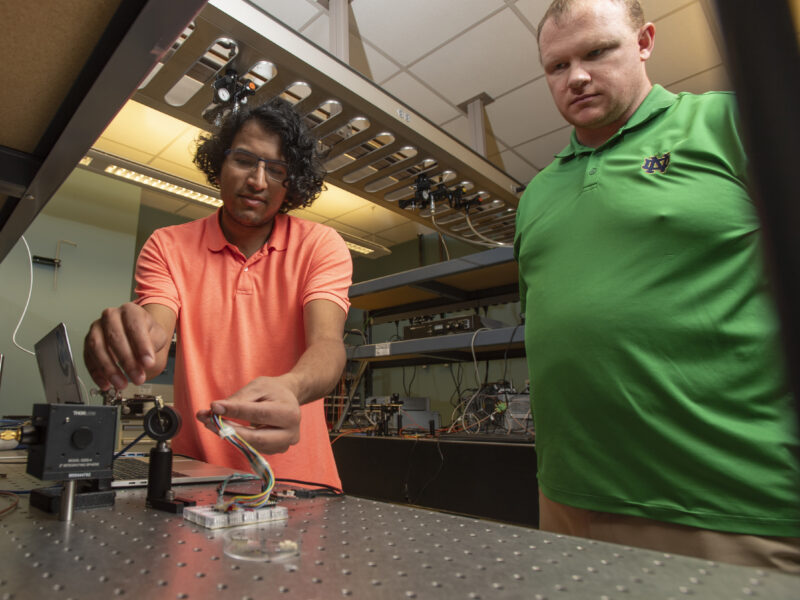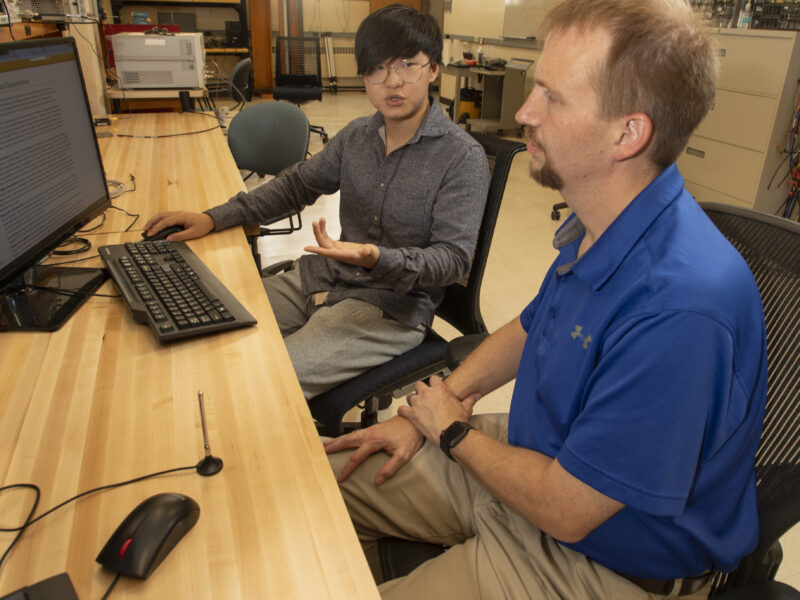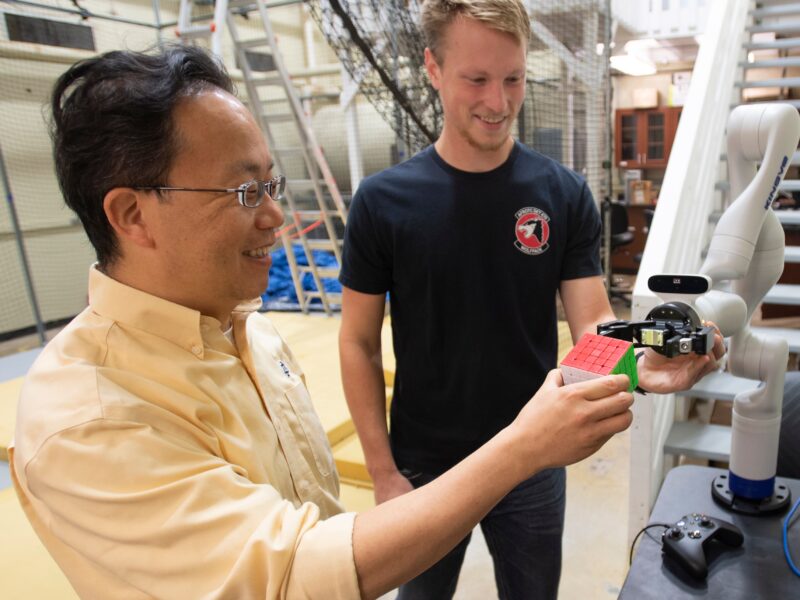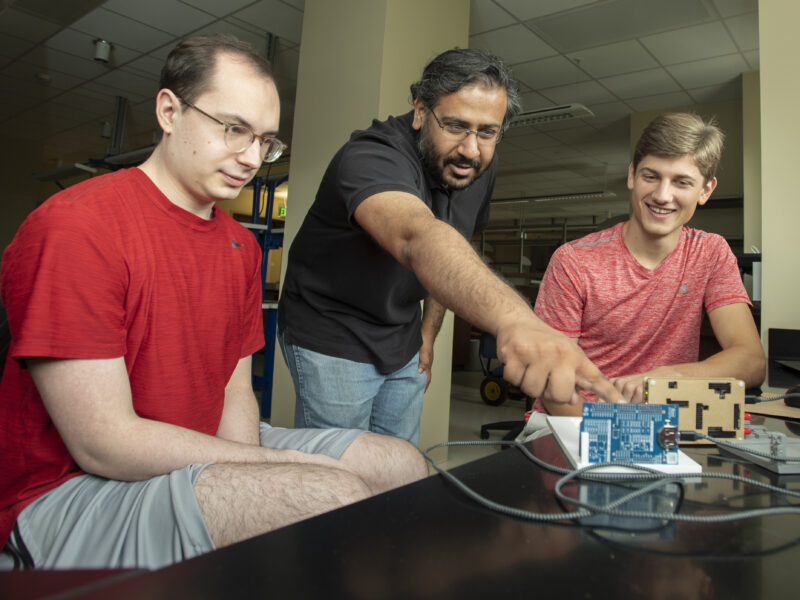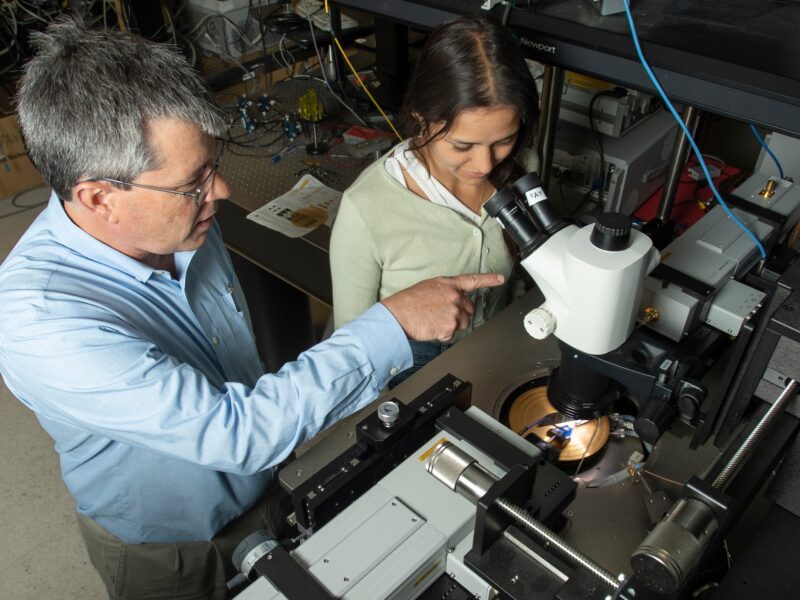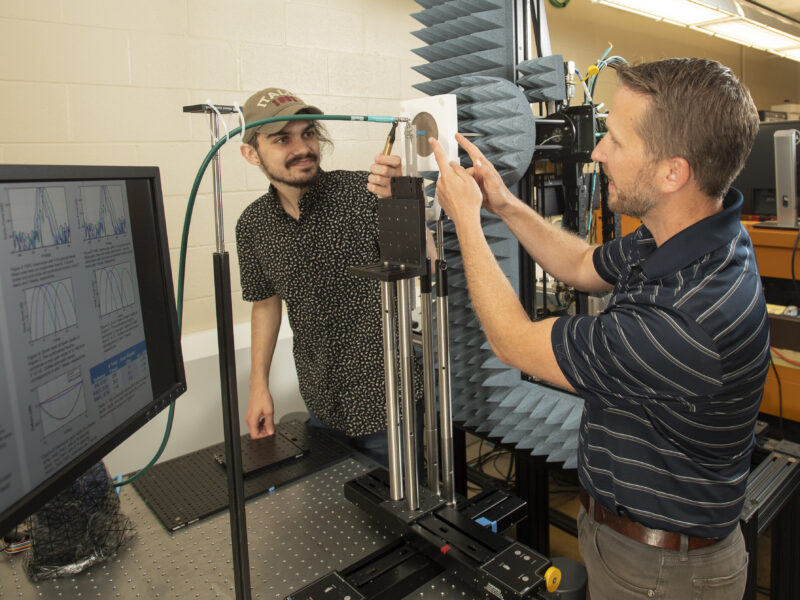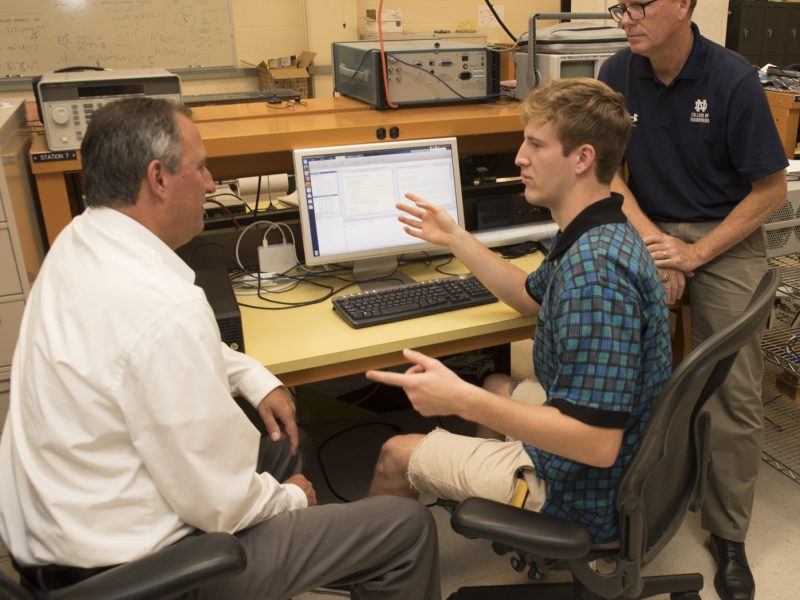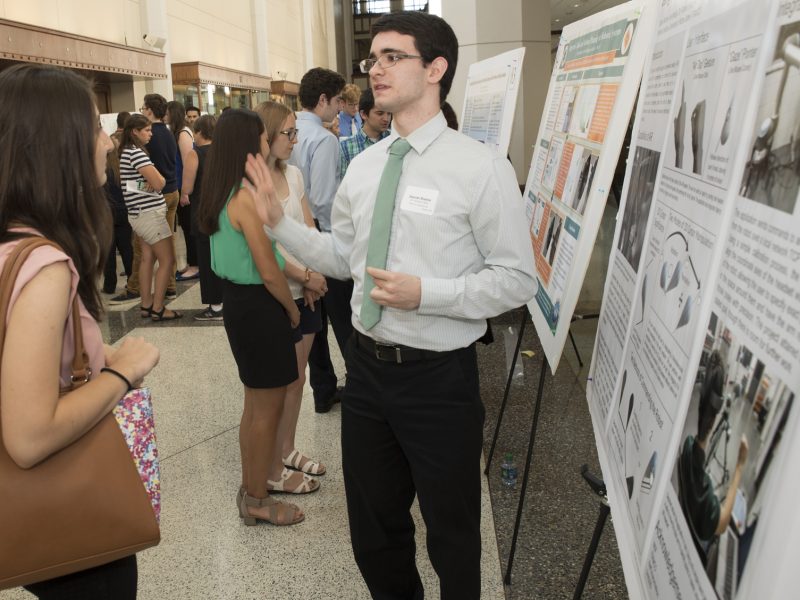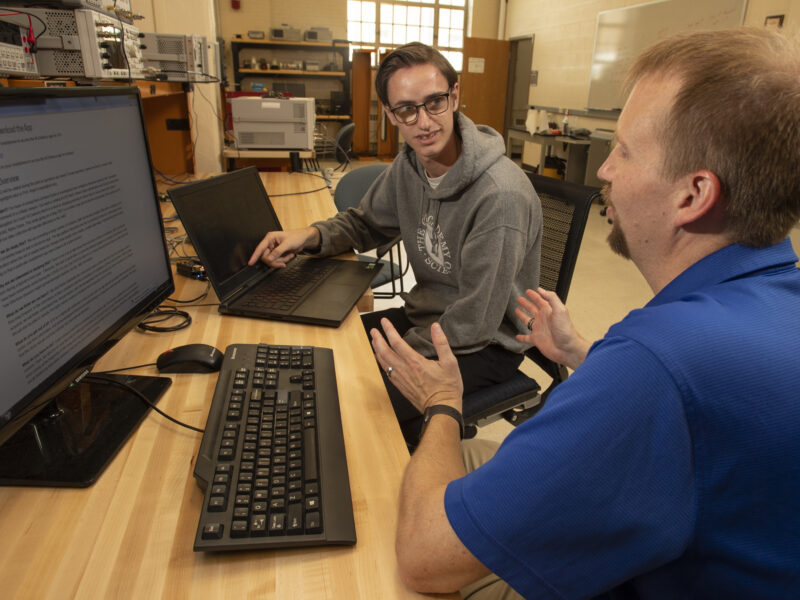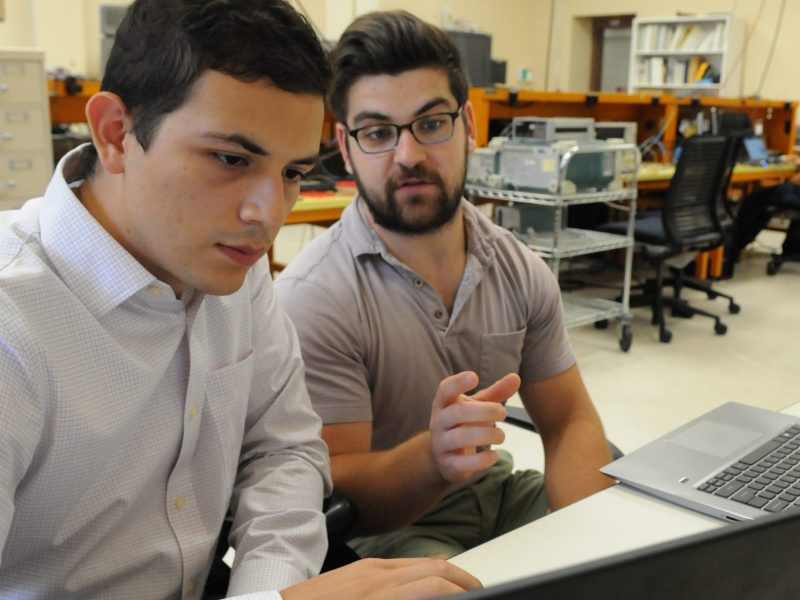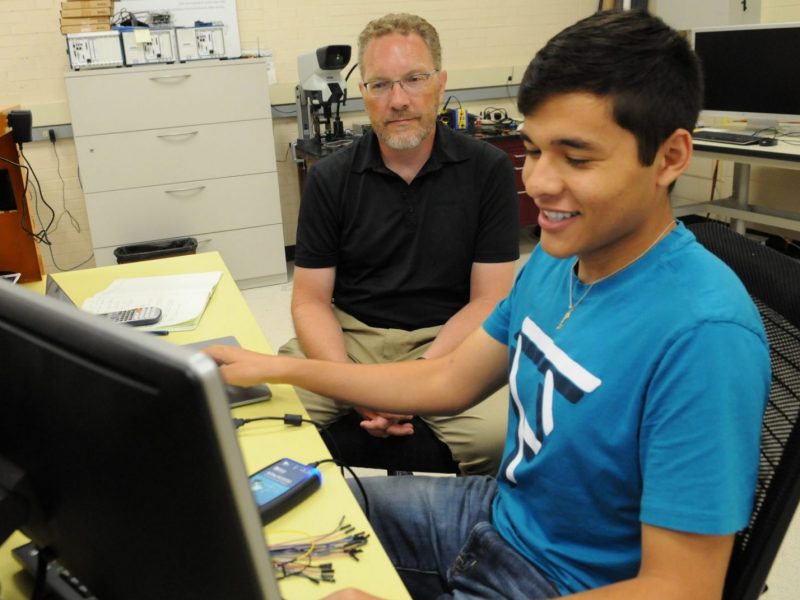A Novel Curriculum for Wireless Communication in Congested and Contested Environments
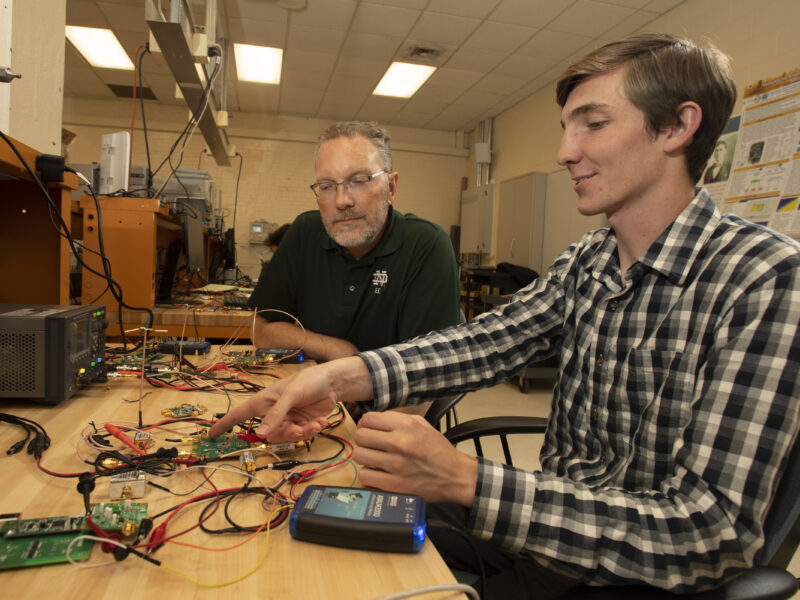
Principal Investigator: Professor Laneman
AWaRE REU Researcher: Nathan Jensen, Brigham Young University
Other Contributors: Xiwen Kang and John Morris
Project Summary:
The Citizens Broadband Radio Service (CBRS), currently targeting a radio frequency (RF) band centered around 3.5 GHz, represents a breakthrough in wireless technology and policy in the United States. For the first time, widespread commercial cellular networks based upon LTE technology will intelligently utilize RF spectrum that has otherwise been exclusively reserved for government systems like Navy radars. As RF spectrum becomes more crowded, and sharing spectrum among very different commercial and government systems becomes the norm, wireless system engineers need to build radios and network services that are much more context-aware and collaborative compared to current designs, basically redesigning such systems from the ground up to be more resilient to interference in congested environments.
To address problems in this space, our team has been developing prototypes, models, and algorithms for what is being called a collaborative intelligent radio system (CIRS). A CIRS needs to be able to sense what is going on in the RF spectrum in and around its intended band of operation, and then adaptive its transmission formats and receiver signal processing algorithms accordingly. Our radio prototypes are based upon software-defined radio (SDR), with which our team has extensive experience. Student projects involve learning how to use and develop for the prototyping platform, designing and implementing a set of new features, and testing and demonstrating those features to the group.
Finding:
Modern communication networks rely heavily on wireless technology which demands a reliable link be established between the sender and receiver of a transmission. A tremendous deal of largely successful research has been performed to increase the data rates achievable via wireless communication. However, very little research exists addressing the issues of maintaining link quality in the presence of antagonistic signal sources. Congested and contested networks are becoming increasingly prevalent issues. We are creating an upper level university course which will expose these to students, thus enabling them to engineer communication networks capable of maintaining link quality in these adverse conditions. The lab for this class involves exposing the students to the various components and signal processing techniques required for building a solid radio transmitter and receiver system. Most recently, we upgraded the radio hardware to include tunable phase locked-loops serving as the local oscillators, active mixers for the modulators and demodulators, and fully differential amplifier drivers supporting dual channel operation. The use of these various integrated circuits- some of which operate at radio frequencies- involves careful circuit design to maintain system integrity and flexibility. Furthermore, combining the various hardware components to build a functional radio is far from trivial, and therefore extensive unit and system testing was performed to determine system performance. Finally, various signal processing techniques were utilized to ensure a robust and high performing communication network. The second version of the course hardware kit has been finalized, allowing continuous streaming over a wireless link to be realized utilizing the homodyne radio architecture.


